Sherlock Holmes was first introduced to the world in 1887 in the novel, A Study in Scarlet, written by Sir Arthur Conan Doyle. Holmes was a brilliant detective with an eccentric personality
His demeanor could fluctuate from cold and calculating to animated and exited, but part of that was his flair for the dramatic. The detective would often hold back observations or evidence, waiting for a moment of maximum drama to reveal them to observers.
This quirky combination made for mysteries couldn’t get enough of. While he was incredibly smart and capable of wondrous observations, the detective had plenty of vices to offset his unattainable genius.
Holmes was flighty, untidy, and had a taste for drugs. These conflicting traits made him complicated but interesting. Holmes was a man who struggled, just like everyone else, and that made readers clamor for more.
It helped that Conan Doyle was a prolific writer who developed an ongoing relationship with The Strand Magazine. Together, they released over fifty-six short stories over the years, building a steady reader base of avid Holmes fans.
Silent movies gave the detective a face and eventually Hollywood gave him a voice. Sherlock Holmes has been translated into languages all over the world, adapted into movies, television shows, radio broadcasts, and Broadway plays. He’s even been made into video games.
Who Wrote Sherlock Holmes?
Sherlock Holmes was written by Sir Arthur Conan Doyle.
Born May 22, 1859, Conan Doyle was an unsuccessful physician who turned to writing when several attempts to open medical practices failed for various reasons.
He ended up finding success as a writer, creating the beloved detective Sherlock Holmes, a literary legacy that endures today.
Was Sherlock Holmes A Real Person?
While the detective isn’t real, he is based on several sources of inspiration. The most notable was C. Auguste Dupin, one of the first detectives in fiction written by Edgar Allan Poe.
Conan Doyle was also influenced by Émile Gaboriau’s detective, Monsieur Lecoq. Holmes actually refers to both detectives in a conversation with Watson in A Study in Scarlett.
Of course, Conan Doyle also found inspiration in real life. In 1877, Conan Doyle worked as a clerk for surgeon Joseph Bell at the Royal Infirmary of Edinburgh. Holmes’ ability to draw conclusions from minor observations was allegedly based on Bell.
Sir Henry Littlejohn was also a source of inspiration. It was through Littlejohn’s Police Surgeon position in conjunction with being a Medical Officer of Health in Edinburgh that helped Conan Doyle build a character bridge the link between medical investigation and solving crime.
Sherlock Holmes' Hat
It’s almost impossible to separate Sherlock Holmes from his iconic Deerstalker hat, but Conan Doyle never actually wrote the famous detective wearing this specific hat.
Illustrator Sidney Paget created the imagery when he created an illustration for Conan Doyle’s short story, “Boscombe Valley Mystery”, for the 1981 edition of The Strand Magazine.
At the time, wearing the Deerstalker hat would only have been appropriate for Sherlock to don in the country. But because his early stories had the detective solving mysteries in the country, the image became part of the character.
While you can buy a Deerstalker hat in many different colors, it is believed that his original hat would have been gray. Over time, other colors have become associated with the detective including brown, checkered, and black.
You can find the hat almost anywhere hats are sold. You just want to look for certain details to make sure it’s accurate Sherlockian fashion. It should have a brim on the front and back with two ear flaps tied with a stylish ribbon on top.
Sherlock Holmes pipe
The other item Sherlock is rarely depicted without is his pipe. During the time, tobacco was considered therapeutic, making it a popular pastime among Victorian men. It was also touted as being a way to increase cognitive capabilities, which is another reason a brilliant detective pondering clues would have been illustrated as smoking a pipe.
Of all the different types and styles, the pipe most associated with Sherlock is the gourd Calabash. But like with the hat, this isn’t actually the pipe Conan Doyle described in the stories.
In them, Sherlock had three pipes: a cherrywood pipe, an oily briar pipe, and a blackened clay pipe that he smoked when he was in a contrary mood.
The Calabash came into the public imagination when actor William Gillette played Holmes in a 1916 silent film. He wanted a pipe that the audience could clearly see that wouldn’t block his face.
The deep bend of the Calabash with a golden end was the perfect solution. In truth, it isn’t a pipe that would have been practical in the field or out in the city, but the Calabash has become as iconic as his unusual hat.
Professor Moriarty Sherlock Holmes
You can’t have a great detective without an equally compelling opponent. That’s where Professor Moriarty comes in.
Moriarty is a brilliant criminal. He plays a hand in so many criminal plots, Holmes calls him the “Napoleon of Crime.” The phrase itself is a nod to a real-life crime lord, Adam Worth, whose exploits stymied Scotland Yard for nearly twenty-five years before finally making a mistake that led to his capture.
Moriarty only has an on-the-page appearance in two stories, though he is referred to in at least five others.
But his presence, particularly how both he and Holmes are seen as intellectual equals, has led to him becoming known as the main antagonist in the Sherlock Holmes world.
Sherlock Holmes Books in Order
It might be a bit of a surprise that there are actually only four Sherlock Holmes novels in the original canon. That’s largely because most of his work was published as short stories in The Strand Magazine, a relationship that was beneficial and successful for both parties. In total, those stories were published as five different collections. Here are the Sherlock Holmes books in order of publication.

A Study in Scarlet
Conan Doyle’s debut and the first appearance of Sherlock Holmes and Dr. Watson follows the pair as they investigate the murder of two Americans. Working with Scotland Yard, both murders are tied to a group that spans the Atlantic and is sinister in nature.
But what the link is exactly remains a mystery. As Holmes tells Watson, “There’s a scarlet thread of murder” that they must untangle and expose.
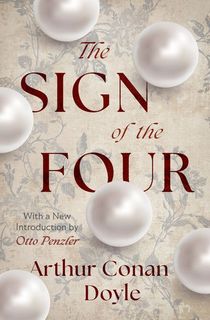
The Sign of the Four
Every year, for six years, Mary Marston has received a large pearl. She doesn’t know why. Not until she receives a letter telling her that she’s been wronged.
And if she wants justice, she has to meet her mysterious and anonymous benefactor. But there’s someone else following them in the fog-filled streets of London. A man intent on revenge with a companion who values treasure more than life.
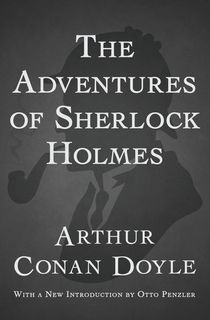
The Adventures of Sherlock Holmes
This collection features twelve of the original short stories featuring Sherlock Holmes and Dr. Watson.
The stories were published in The Strand Magazine between 1891 and 1892. They are published in this collection in the order of publication, and in the original publication included the illustrations of Sidney Paget as they appeared in the magazine.
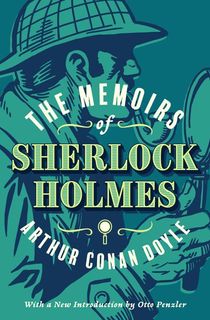
The Memoirs of Sherlock Holmes
Also originally published in the Strand Magazine, this next collection of short stories continues to follow Holmes and Watson as they solve crime around London. They are also illustrated by Sidney Paget.

The Hound of the Baskervilles
While this is now a complete novel, The Hound of the Baskervilles was actually a serialized story that first appeared in The Strand Magazine from August 1901 through April 1902.
It follows the detective as he investigates an ancient curse, complete with a ghost hound, through the gray towers of Baskerville Hall and the wild moors of Dartmoor.
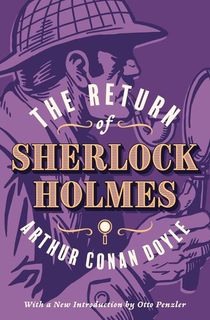
The Return of Sherlock Holmes
The Return of Sherlock Holmes is another collection of short stories first published in The Strand Magazine.
Though The Hound of Baskervilles was set before the detective's apparent death in The Final Problem, the popularity of the novel and the detective prompted Conan Doyle to “revive” Sherlock and return him to his dear friend Dr. Watson as they continue to puzzle out solutions to London’s most perplexing crimes.

The Valley of Fear
Sherlock Holmes received a note from one of Professor Moriarty’s henchmen alerting him to an upcoming crime. But when he and Watson arrive at the Sussex manor, it’s already too late.
But looking at the body, Holmes realizes there’s more to this crime than meets the eye. Loosely based on the Molly Maguires and Pinkerton agent James McParland, The Valley of Fear was also a serialized story in The Strand Magazine.

His Last Bow
A shorter collection, these seven stories start with the infamous detective living in retirement in the English countryside. As war with Germany looms, Watson convinces Holmes to don his detective hat once more.
These stories highlight how Holmes has to adapt to a changing world, giving him much-needed depth that illustrates the worries of the time.
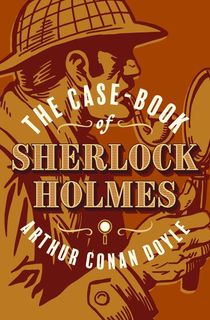
The Case-Book of Sherlock Holmes
The final set of stories ever published in the Sherlock Holmes canon, these twelve stories see Sherlock Holmes as he finally decides to retire.
On the way, he tackles some of London’s most perplexing cases, giving readers one final set of adventures with the detective and his faithful companion, Dr. Watson.
Sherlock Holmes Movies
Over the years, there have been numerous movies made about the intrepid detective. Here are some of the best adaptations, according to both critics and fans.
Sherlock Holmes (2009)
Though the movie isn’t actually based on any of the stories or novels, Robert Downey Jr. gives a darker edge to the detective. Director Guy Ritchie adds plenty of spectacular action but never lets the audience forget that Holmes is a detective first.
It’s gritty, with a splash of well-placed humor, and well worth watching for any Sherlock fan. Even better, not only is there a sequel, but a third movie has just been announced.
The Hound of the Baskervilles (1939)
It makes sense that the most popular novel would end up making one of the best adaptations, and this 1939 classic is an absolute must-watch for anyone who loved the novel. Basil Rathbone was born to play Holmes and Nigel Bruce does an amazing job bringing Dr. Watson to life.
The performances are stellar and the cinematography is superb, giving the mystery the right edge of horror that makes it unforgettable. Rathbone and Bruce made such a dynamic pair, there are fourteen films in this iconic franchise.
The Great Mouse Detective (1986)
One of the best things about The Great Mouse Detective is how it creates a world of animals that mirrors our own. We see the silhouette of the iconic detective, but Basil, his rodent counterpart is pure Sherlockian through and through.
Voiced by Barrie Ingham, we also get Vincent Price as the evil Professor Ratigan and an archived snippet of Basil Rathbone as the human Sherlock, this film is an adventure through the streets of London on a much smaller and delightful scale.
The Private Life of Sherlock Holmes (1970)
The last movie that legendary writer-director Billy Wilder made, The Private Life of Sherlock Holmes is a thoughtful and moving take on the detective.
With subtle hints of Holmes’ sexuality and a tragic end to a burgeoning friendship, the film is moving for its vulnerability, showcasing the detective’s vices as well as his virtues.
It’s an interesting and refreshing take that shows us the interior complexity of the detective without taking away the mystery elements fans expect in a Holmes film.
Without A Clue (1988)
What if there was a secret at 221B Baker Street? What if Dr. Watson was behind the brilliant deductions the entire time?
That’s the premise of this 1988 film starring Michael Caine as a drunken Sherlock Holmes and Ben Kingsley as the true mastermind detective.
It’s a wonderful subversion brilliantly executed, and the on-screen chemistry between Caine and Kingsley is incredible to watch.
Mr. Holmes (2015)
Many movies focus on the detective's glory years, but Mr. Holmes takes an unexpected approach. Sherlock is nearing the end of his life and has to face that not only is he losing some of his esteemed cognitive skills, but some of those astonishing acts were embellished in the stories made famous by Dr. Watson.
It’s a quieter mystery, veering well into a drama, but one that is still captivating and compelling.
Sherlock Holmes TV Show
While there have been numerous television adaptations on the stories of Sherlock Holmes, none have quite captured the public’s adoration as Sherlock.
The show premiered in 2010 and gave Holmes and Watson a believable modern twist. Sherlock, played by Benedict Cumberbatch, is less a genius detective and more a “high-functioning sociopath.” To offset his colder demeanor, Martin Freeman plays John Watson, a wounded Afghanistan war veteran.
The series ran from 2010 through 2017, producing a total of thirteen episodes aired as four three-part series with one special episode.
Cumberbatch excelled as the far more cerebral detective, worried more about solving the puzzle than caring for the human lives attached to the crimes.
And with a far more active and capable Watson to help steer Holmes back into the depths of humanity, it was a combination that struck all the right chords with viewers and critics alike.
